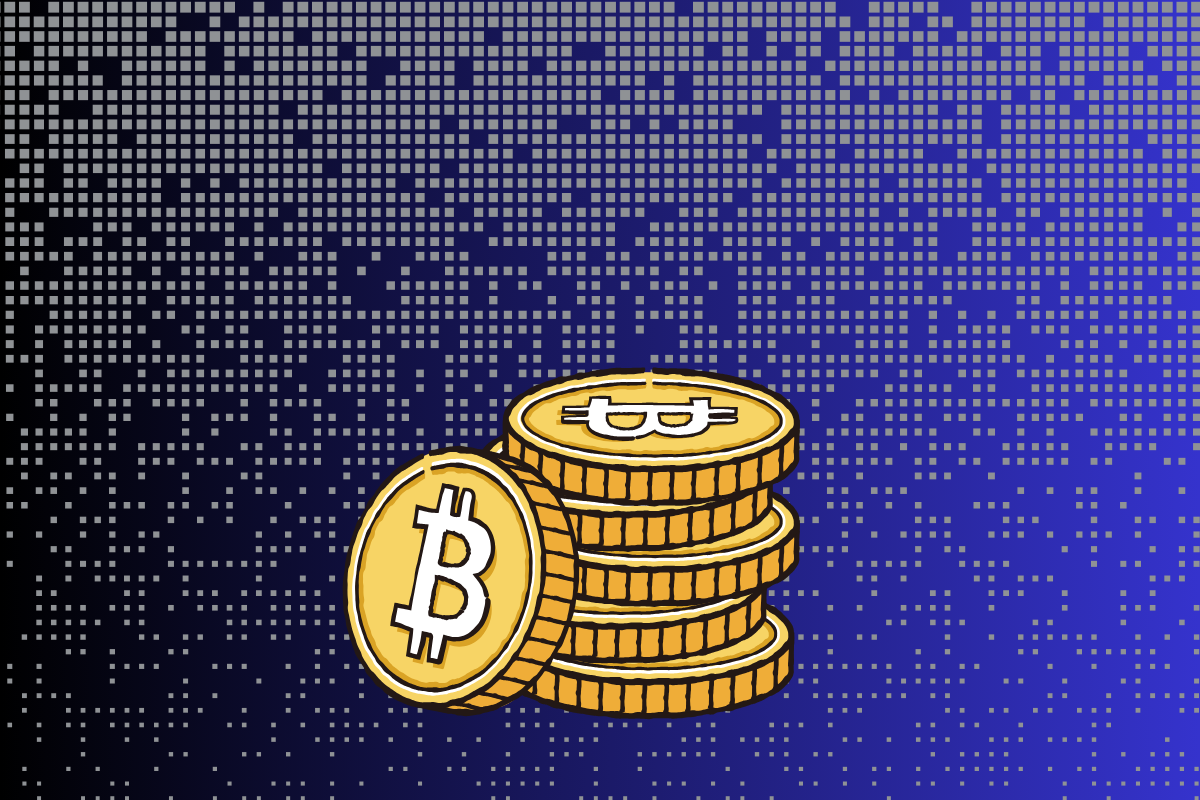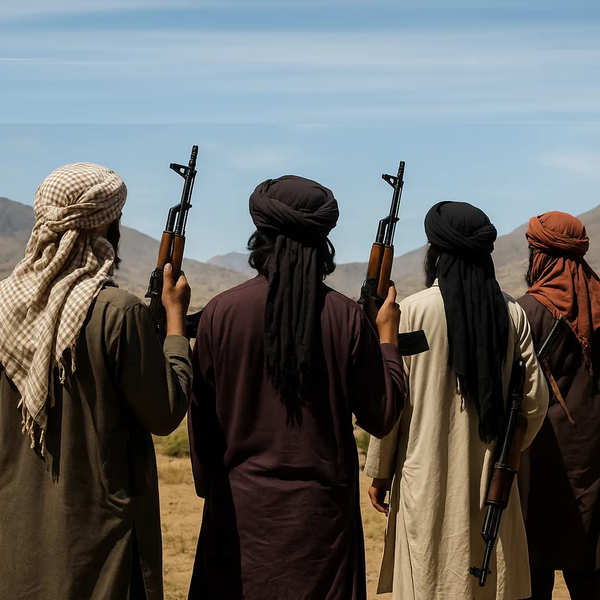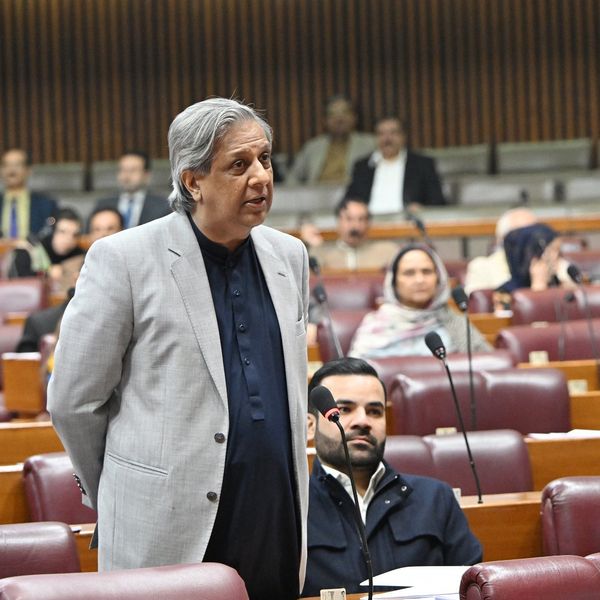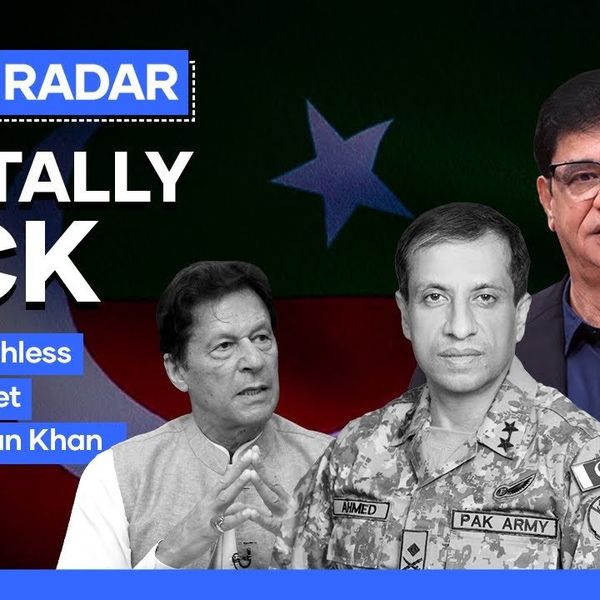Bitcoin might be the only true digital asset
Pakistan not having any firm position is simply due to limited sector expertise with the government
Ali Farid Khwaja
Guest Contributor
Ali Farid Khwaja is the Chairman of KTrade Securities and a consultant for Stacks Foundation.

Pakistan needs to have clear regulations on digital assets. I don’t buy that the current status of not having any firm position is a conservative stance borne out of prudence. I think it's simply due to limited sector expertise with the government.
In my article, 'Why Pakistan needs a Bitcoin strategic reserve fund'', I presented the case for why Pakistan can benefit from having an allocation to Bitcoin as a strategic asset. I cited the case that even the U.S. Senate is currently debating this both at the federal and state levels.
Bitcoin is, in my view, an appreciating asset and if the U.S. does indeed start adding it to its strategic reserve, it could take the price of Bitcoin much higher. This, to me, sounds like a matter of when rather than if, since President Donald Trump has publicly and repeatedly stated his goal of making the U.S. the global leader in digital assets.
My goal is to provide some policy suggestions for those in the government who might be interested in or tasked to work on this area. Disclaimer: This is not an investment advice.
An important policy consideration is how to safeguard the public from the scams and frauds that are associated with the digital asset industry. The memecoin phenomenon is hard to justify and has many more scams than well-intentioned launches. The recent examples of Trump Coin, Melania Coin, and Argentina’s $Libra coin highlight this risk.
Argentina’s President Javier Milei is now facing a corruption investigation, as the memecoin he promoted crashed after peaking at a $4.5bn market cap. There is even a KhanCoin out there, inspired by a former prime minister of Pakistan. It has crashed to $0.0012.
It takes a few minutes to launch a new memecoin on platforms such as Pump dot Fun. There are more than 25,000 digital assets that trade on various centralized (such as Coinbase and Binance) and decentralized exchanges (such as Uniswap).
While it might be okay for people to privately speculate on whatever they might fancy, it is imperative for the regulator to study, test, and approve digital assets that are suitable.
In the UAE, the Dubai Financial Services Authority (DFSA) has only five digital assets on its approved list:
- Bitcoin (BTC)
- Ethereum (ETH)
- LiteCoin
- Ripple (XRP)
- Ton (TON).
In the U.S., the SEC has only yet allowed ETFs on Bitcoin and Ethereum. Ripple and Solana (SOL) are pending approval.
In my view, Bitcoin is the only digital asset that passes most tests of maturity. It is the biggest, most secure, and the most widely held digital asset. More than 106 million people own Bitcoin globally. The fundamental property that makes it most stable, secure, and attractive is that it has a limited supply (only 21 million Bitcoin would be generated via mining).
It is truly decentralized, which means that no one can unilaterally control, edit, tamper, or change it. Hacking it would require taking over 51% of the mining nodes, a feat which would be too expensive to do now. Bitcoin is truly powered by mathematics rather than by any individual, commercial entity, or government.
The identity of its founder(s), Satoshi Nakamoto is still unknown, but even Satoshi would not be able to change Bitcoin now. There are around 19.5 million Bitcoin in circulation (out of 21 million which would be mined in total).
The largest holders of Bitcoin today are financial institutions. The ETFs by Blackrock, Vanguard, Grayscale, and Fidelity have more than $100 billion AUMS and own more than 1.1 million BTC. Satoshi owns around 1 million BTC, Michael Saylor’s Strategy owns around 478,740 BTC, and Binance has 633,000 (including customer deposits).
Many fundamental properties of Bitcoin make it the most suitable form of money. Money has changed many forms and shapes. From the YAP stone used in Micronesia 600 years ago, to gold, metal coins, paper banknotes, plastic cards, and electronic mobile phones. There also have been banknotes made of cloth, and famously cigarettes were used as a medium of trade in Weimar Germany.
Bitcoin is the most suitable form of money, especially to enable an AI-based future where robots and machines are transacting with each other. Those interested in further reading on why Bitcoin is better money should read Winklevoss’s thesis on this topic or follow Michael Saylor’s writings.
Fundamentally since Bitcoin’s supply is limited, its price will go up when the demand goes up. Simple. This is unlike almost all other tokens, where the owner/controller can simply print more money by adding supply. This is, of course, not dissimilar from how modern money works, where the Fed can print as much as it wants. This ability to print more money at will has led to the concern about debasement of currency, which is one of the reasons why the US is considering building a Bitcoin strategic reserve.
This leads to a frequently asked question that if Bitcoin is the original and true digital asset, why do Ethereum, Solana, and others exist? What is the difference? I know readers who are experts in this area will already know this, but since this article is aimed at policymakers, I am taking a more academic approach.
Bitcoin was designed to be programmable money, but since Bitcoin was very secure (the chain requires many miners to validate each transaction), a consequence of security was that programming on Bitcoin was expensive and took a long time. To cater to this demand for making programmable money, other blockchain projects such as Ethereum, Polygon, Avalanche, Solana, Sui and Aptos were launched. They make it simpler, cheaper, and faster to make web3.0 projects on their own blockchain. Over time, Bitcoin has evolved into 'digital gold'—a store of value—while various blockchain protocols continue to compete for dominance in the web3.0 smart contract space.
These platforms are also referred to as Layer 1 tokens. Other tokens such as the memecoins mentioned earlier are built on top of the Layer 1 protocols. For example, TrumpCoin, MelaniaCoin, and Libra are built on Solana. Ethereum is the largest protocol for smart contracts. Solana had strong momentum in activity last year, especially due to memecoins. Ripple originally focused on cross-border bank-to-bank payments (as an alternative to SWIFT). Sui and Aptos specialize in real-world asset tokenization.
Blackrock’s USD institutional digital liquidity fund has been tokenized on Aptos, for example. The most important use case of smart contracts has been in launching stablecoins. Stablecoins are now handling more volume for cross-border transactions than PayPal. Most stablecoins are based on the Ethereum network.
Stacks introduced a major innovation to the Bitcoin ecosystem by introducing a technology that makes it possible to write smart contracts that are secure by the Bitcoin blockchain. This means that it combines the speed and ease of development that other L1s have and has the security and transaction finality of Bitcoin – the most secure digital platform.
This is quite revolutionary since this now allows smart contracts to be written on top of the original and the largest blockchain – bitcoin. It potentially makes all other protocols redundant. Developers can now develop directly on Bitcoin.
Stacks co-founder Muneeb Ali, a PhD in Computer Science from Princeton is an American Pakistani who did an undergraduate from LUMS. Stacks' success would mean that all future programming in the web3.0 space would come back to Bitcoin. This is attractive for the developers since they also get exposure to the asset that is most secure and has the highest chance of appreciation.
I hope this overview helps Pakistan’s policy experts understand and appreciate the origins and differences between various digital assets. Since our policymakers have a natural bias toward conservatism, the best approach, in my opinion, would be to be selective in screening digital assets. Potentially just limited to Bitcoin. Indeed, this will only happen after Pakistan makes a regulatory regime for digital assets.
The writer is the Chairman of KTrade Securities and a consultant for Stacks Foundation.
The views and opinions expressed in this article are those of the author and do not necessarily reflect the editorial stance of Nukta.










Comments
See what people are discussing